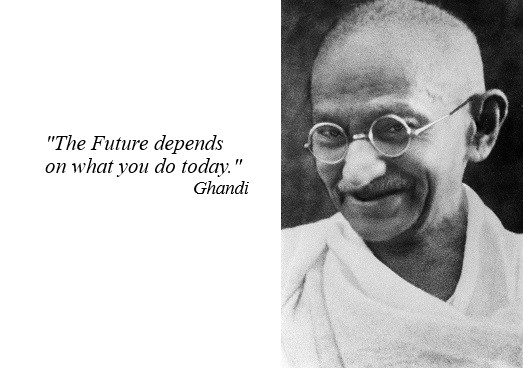Friday 8 November 2019
Net Zero as a target is very clear – net zero carbon emissions by 2050. The old adage about setting targets comes to mind, is it SMART i.e. Specific, Measurable, Attainable (or sometimes quoted as Agreed upon), Realistic and Time based? It is certainly specific, measurable and time based. Is it attainable and realistic? Time will tell.
For people to adopt a target requires it to be motivating. Net Zero is, or should be highly motivating given the scientific evidence of the potential climate consequences if we don’t restrain emissions. A number of senior business people have reported being motivated to action by questioning from their children and grandchildren about what they are doing to avert a climate crisis and there is probably no better motivator. To seriously adopt a target, rather than just paying it lip service, requires leaders of all types of organisations, from the largest to the smallest, to stand up and take a clear position, define a clear path of action and, critically, actually commit resources to following that path.
What does net zero by 2050 i.e. in the next 30 years, really mean in practice? As Michael Leibrich has pointed out the 30 years between now and then spans two business cycles and markets and businesses change a lot in two cycles. Think back to how different the world was in 1990. In 1989 the world’s first dial-up ISP came to the market and only 0.5% of the world’s population were ‘on-line’ (at least while dialing up!). Renewables were ‘alternative energy’ and you could fit the entire UK wind ‘industry’ in one small room (and we did).
So if we take the idea that we have two business cycles to achieve net zero what do we need to do in this investment cycle? For many users such as hospitals looking at major Energy Performance Contract (EPC) upgrades it is important to fully review alternative technologies to the normal gas fired Combined Heat and Power (CHP) such as heat pumps, but the reality in many cases is that the technology and economics are not quite there yet. By the second investment cycle it will almost certainly be available and viable so adopting the best option for carbon reduction and achieving 30-50% is a sensible strategy. It is also important to consider more radical options like deep fabric retrofits to reduce demand by 70-90%. These are generally regarded as not viable but with a combination of proper integrated design and better business cases that properly value all the benefits, including non-energy benefits such as better patient outcomes, may tip the balance. To even consider and evaluate these options however, let alone develop and implement them, requires strong leadership and capacity building amongst clients and the supply side.
There are examples of even large organisations moving even quicker towards net zero. The case of Orsted (formerly DONG) is certainly inspiring. The company has moved from an oil and gas company to a renewables company in about a decade. In 2010 half of its earnings came from exploration and production or thermal generation and the rest came from sales, distribution and trading. About 70% of its generating plant burnt oil, gas or coal. By 2017 when the company changed its name 70% of the generating fleet was renewables, biomass or waste and by 2020 this is expected to reach 90%. The company has sold off its oil and gas assets and its carbon intensity has fell from 450 g/kWh to 150 g/kWh between 2007 and 2017 (and has since fallen further). Interestingly, EBITDA and market cap have increased more than the six largest independent European oil and gas companies who were considered their peers, and the company has maintained an increasing dividend. This transformation in a decade is nothing short of amazing and the management of Orsted have shown true leadership. Turning round any multi-billion euro/pound/dollar corporate is difficult, as they say it is like turning a super tanker, but the Orsted example shows it can be done and puts many others to shame.
We have the technologies to reach net zero. The motivation is clear. The economic case is stronger than ever and getting better, especially once people look at all benefits. The missing element in reaching net zero is real leadership, leadership at every level from national and local politicians and boards of major companies down to SMEs.

Comments
Comments are closed.
Dr Steven Fawkes
Welcome to my blog on energy efficiency and energy efficiency financing. The first question people ask is why my blog is called 'only eleven percent' - the answer is here. I look forward to engaging with you!
Tag cloud
Black & Veatch Building technologies Caludie Haignere China Climate co-benefits David Cameron E.On EDF EDF Pulse awards Emissions Energy Energy Bill Energy Efficiency Energy Efficiency Mission energy security Environment Europe FERC Finance Fusion Government Henri Proglio innovation Innovation Gateway investment in energy Investor Confidence Project Investors Jevons paradox M&V Management net zero new technology NorthWestern Energy Stakeholders Nuclear Prime Minister RBS renewables Research survey Technology uk energy policy US USA Wind farmsMy latest entries
- ‘This is not the end. It is not even the beginning of the end. But it is, perhaps, the end of the beginning’
- You ain’t seen nothing yet
- Are energy engineers fighting the last war?
- Book review: ‘Stellar’ by James Arbib and Tony Seba
- Oh no – not the barriers again
- Don’t assume ignorance, sloth, bias or stupidity
- Collaborations start with conversations


